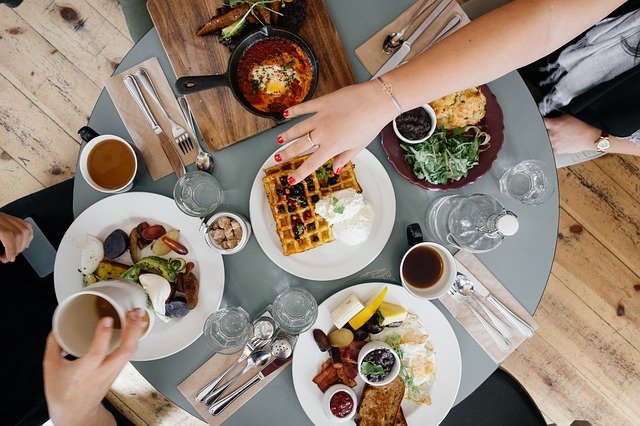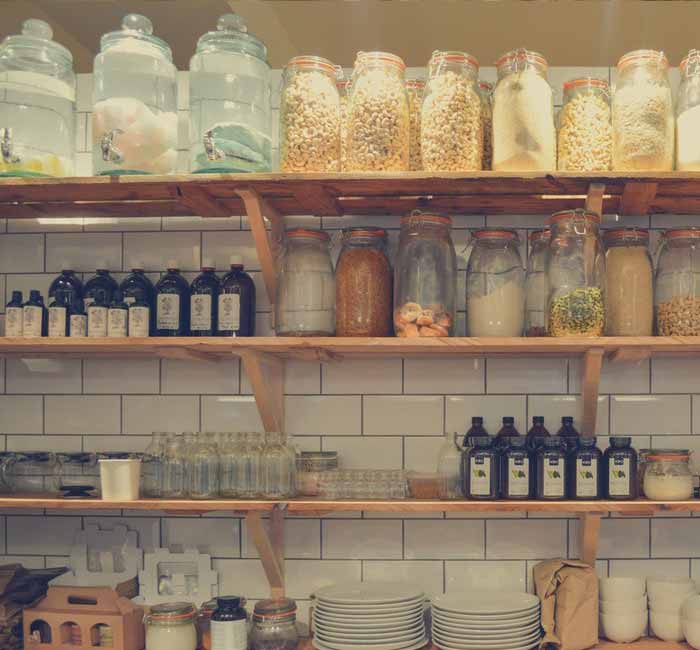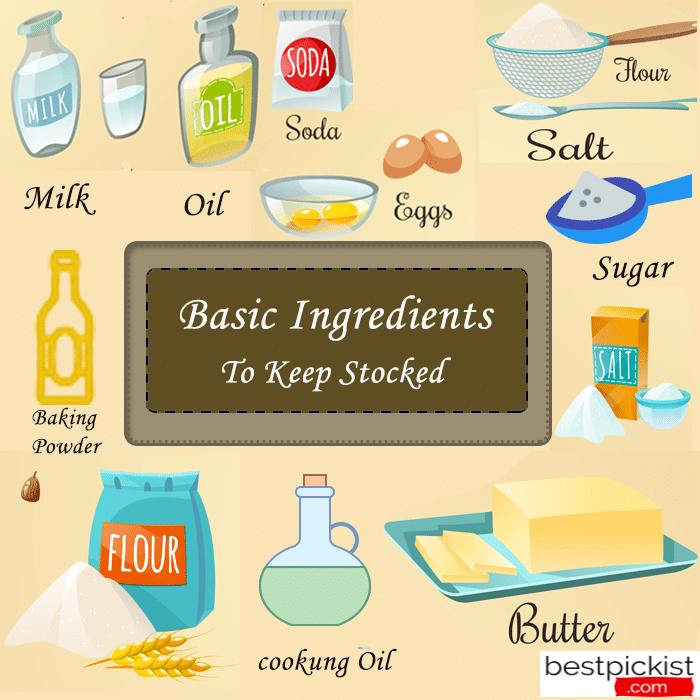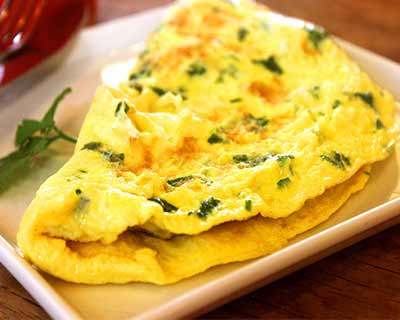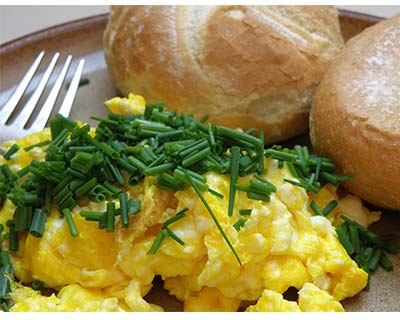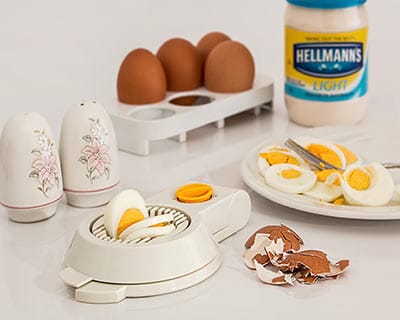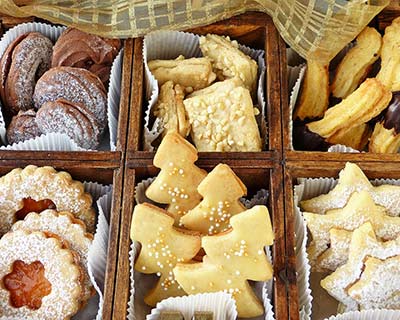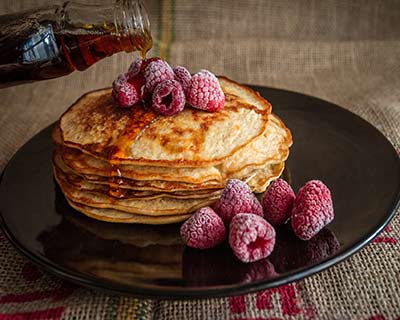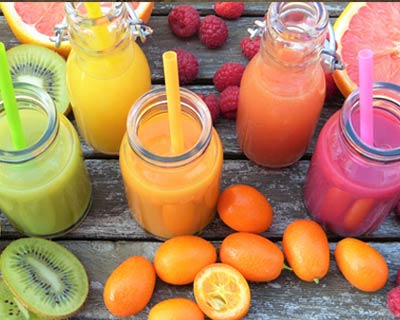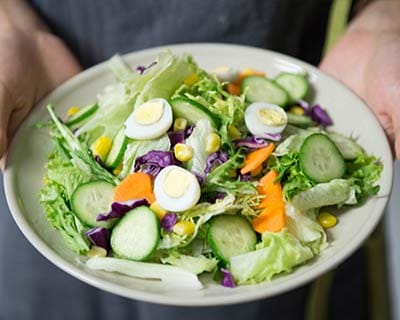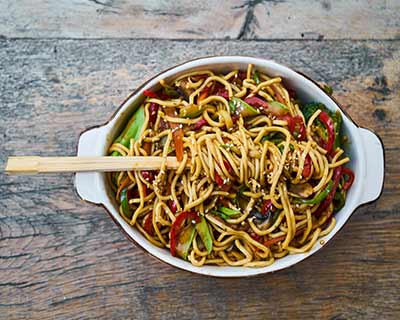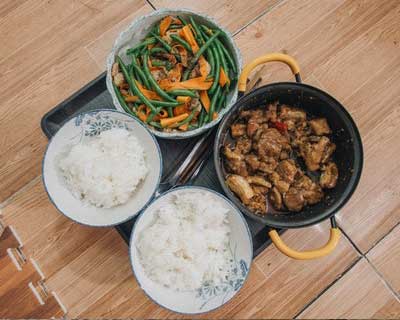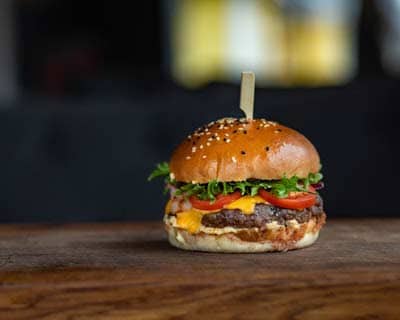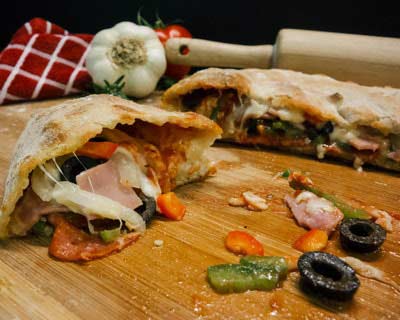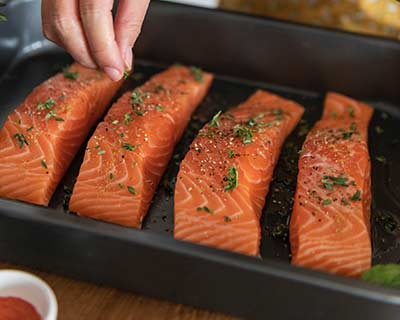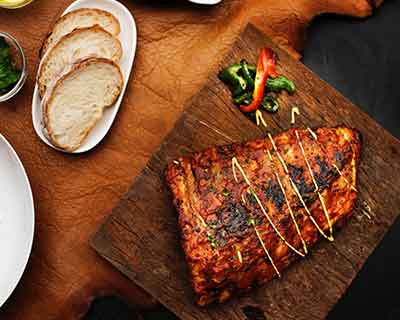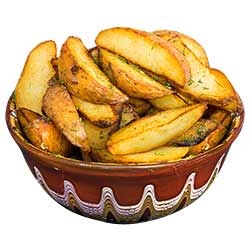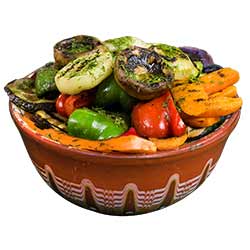With the world always rushing, few people actually have the time to cook anymore. In fact, there are a large number of people who have never been taught cooking and kitchen basics how to cook due to working parents when they were growing up.
No matter your age, it is never too late or too early to learn cooking . It does not matter if you are a teen or young adult preparing to live on your own or enjoying mid life.
If you want to learn how to cook basic items and set up a kitchen, this foundational article is a great place to start.
Quick Navigation
10 Cooking And Kitchen Basics You Learn
- Learning About The Basic Knife Skills
- Making A Menu
- Making A Grocery List
- Learning To Knead Dough
- Cooking Brown Meat
- Knowing The Basic Cooking Terms
- Knowing About Kitchen Safety
- Setting Up Your Kitchen
- Stocking Basic Ingredients
- Mastering The Basic Recipes
Skills To Learn
If you want to be a master chef, you will need to look for some additional training. However, for those simply wanting to master their own cooking and kitchen basics, there are a few basic skills that you should learn.
Below are some of these skills. Take some time to learn and practice these skills so that you can reap the ultimate rewards from them.
1. Learning about the Basic Knife Skills
At some point in your cooking career, you are going to need to know how to chop, dice, slice, and other cutting techniques.
If you have never purchased your own knives or been taught about them, you will quickly learn that there are a lot of different kitchen knives out there, and they are each made for different purposes.
Learning to tell the difference in them is a very important, basic cooking skill.
It can help prevent injury and cut down on the time it takes to complete prep work.
2. Making A Menu
Making a menu for your meals seems to be a lost art, though it is one everyone wants to know. Menus, sometimes called meal plans, are simply a list of what you will cook that week or month.
You can make the menu as far in advance as you like, but most people find it helpful to plan one week to one month at a time.
A menu is more than just telling you what you will eat that night. It is actually a great time saving tool. When you make your menu, check that you have the ingredients.
If not, plan your grocery list with the necessary items. This will cut down on the amount of trips you must make to the grocery store.
Menus also simplify your evenings. Before leaving home in the mornings, check your menu. Is there any meat that you need thawed for your dinner?
If so, do that now. Are you making a crockpot dinner? Put the ingredients in your crockpot now and turn it on low. You might go a step further to set all of your nonperishable sides out on the counter.
When you get home that evening, you either have dinner waiting for you in the crockpot, or you have everything ready to be cooked without any extra work. These few extra morning steps can be very appreciated at the end of a long day.
To make a menu, you need nothing more than a calendar or a sheet of paper that you have listed the days of the week on. Figure out what meals you can cook, or the ones you want to learn, and plug them into the different days of the week.
Be fair to yourself, though. If you work long hours during the week, save your four course meals until the weekend. Plan simple meals such as spaghetti and soups during the week.
3. Making A Grocery List for cooking and kitchen basics
Another lost art form is making a grocery list. I have lost count of the times someone sees me with my list at the grocery store and comments, “I really need to start making a list,” or, “See, she makes a list. If we start making a list, we won’t be in the store so long.”
Making a grocery list has about as many benefits as making a menu, but the two biggest benefits are how much time and money you save.
Have you ever gone shopping without a list? I do not mean the shopping where you are intentionally splurging or spoiling yourself. I mean going into WalMart or Target to purchase some necessities.
If you have, you have probably seen just how easy it is to spend way more than you planned to, and you are not alone. Stores are set up to encourage you to spend your money- that is how the retailer makes money.
Going in without a list is asking for trouble. However, when you take a list with you, it is like having a road map that helps you ignore the additional temptation, and it reminds you of why you are there in the first place. People with a grocery list are much less likely to overspend than those without one.
Making the grocery list is rather simple when you have a menu as we discussed before. However, do yourself a favor by organizing your list into categories.
I have seen people simply write down everything they need as it comes to mind, take that list in the store, then spend an hour longer than they should walking back and forth, and revisiting aisles.
Do not worry about perfection, but if you list dairy in one category, canned food in another, frozen in another, and so on, you will save yourself a lot of time.
After you have become familiar with how your grocery store is laid out, you can start organizing your list similarly for even greater ease.
4. Learning To Knead Dough
Making homemade bread was once a basic kitchen skill. Suddenly, you can buy a loaf of bread for a dollar or two and people stopped making it.
The small percentage of us that still do keep making it because it is healthier since there are no preservatives and such, and it just simply tastes better.
Oddly, I have learned that many people who shy away from making bread is due to the kneading process.
At some point, people complicated what is actually a very simple task. It is also kind of fun and very therapeutic.
After mixing the ingredients together as your recipe suggests, coat your surface with some flour. Put your mixture onto your floured surface, then coat your hands with flour as well. You then begin kneading, which is basically like massaging the bread.
Knead it your mixture, fold it over, knead some more, fold it over, and continue this process for as long as your recipe suggests. That is the very basics of kneading bread. At times, you might stretchy it then roll it back out, or punch it if it is rising.
If you have children, they will probably enjoy doing it with you as mine do. Be warned that your forearms will be getting a workout, so they will probably be sore for a couple of days.
Do not be intimidated by kneading and baking homemade bread. It is very simple and you will feel great when you take your first loaf out of the oven.
5. Cooking Brown Meat
Regardless of the meat you are cooking with, you want to lock the flavor inside of it. If you simply throw it on a pan, the flavor is going to escape out of the top.
To prevent this, you can use a simple cooking technique called browning meat. This simply means that before you really begin cooking it, you quickly pan-fry each side of the meat.
For instance, when I cook steak, I have let the meat marinate beforehand.
I want that flavor and juiciness of the steak to remain inside, so before I start the real cooking, I place the steak on the skillet, let it sit for long enough for me to grab my tongs, then immediately flip it.
Doing so is like creating a wall on each side of the steak. You can brown much more than steak, though. Many people do it to the meat the use in soups and stews, and when they cook pork chops and more.
As a side note, I did not invent this process. It has been around for a while, and most people that cook great steaks use this process, so try it out for yourself.
6. Knowing The Basic Cooking Terms
Al Dente
Italian word normally used to describe pasta that is barely softened- just enough that it can be bitten into as opposed to soft.
Au Gratin
Describes a dish that is topped with cheese or breadcrumbs with the top slightly browned in the oven. A popular one is au gratin potatoes.
Baking Powder
A powder used to help dough or batter rise. It will be needed for many homemade recipes.
Baking Soda
Another leavener for bread recipes. It is also a great deodorizer, and when you mix it with vinegar, it is an excellent cleaning agent.
Baking Sheet
A flat metal sheet, sometimes referred to as a cookie sheet, that is used to bake biscuits, cookies, and other desserts. They are also used at times for pizzas and under pies to prevent a mess in the oven and provide extra stability
Blackened
A process in which some type of meat, normally fish, is rubbed with spices, then cooked in a cast iron skillet. Blackened dishes are popular choices in many eat in restaurants.
Broil
Cooking and browning a food item in the oven from top.
Brown
Cooking each side of meat quickly over very high heat to seal in the flavor and juice.
Broth/Bouillon
Liquid created when cooking vegetables, meat, fish, and more. It is strained, then used to flavor other dishes. It is also often used in soups.
Caramelize
A process in which sugar is liquefied. It is heated with very high and melts into a clear syrup.
Convection Oven
An oven with a fan that cooks food by continuously circulating hot air.
Dice
When you dice, you cut the food- often vegetables- into small cubes.
Cut In
A process in which a cold fat such as butter is mixed into dry ingredients until it all becomes a crumbly mixture. It is usually done with a fork or a pastry blender, though it can be done with a food processor.
Dash
A very small unit of measurement- usually between 1/16 and 1/8 of a teaspoon. If you are adding a “dash of salt”, it usually takes no more than one to two shakes of the salt shaker.
Egg Wash
Egg yolk mixed with milk or water. Some people brush it over food before popping it into the oven as it improves the look of the food. Personally, I use an egg wash when I fry chicken. I dip my chicken into the egg wash before coating it with my flour mixture so the flour stays on my chicken better during the frying process.
Spatula
A flat cooking tool. They are great for flipping food items, such as pancakes, or get cookies from your baking sheet. Some have a curved edge that makes it easy to scrape the sides of a bowl or pot.
Puree
To puree is to mash food into a smooth consistency. To get a better understanding, consider baby food as it is mashed fruits and vegetables.
Sear
To scorch food with really high heat, just as we talked about to brown meat.
Simmer
When you cook food in a pot on really low heat- just enough heat that you see tiny bubbles forming. Most stoves have a setting for simmer on the eye’s dial.
Steam
To cook food with the steam of boiling water from beneath. This can be a very healthy option, but if you are not careful, this can actually dry your food out.
Stir-Fry
Much like it sounds, stir-fry is the process of frying small pieces of food in a skillet over high heat while you continually stir it
Whisk
A cooking tool that has a looped handle on one end and a collection of wires on the other that lets you whip items such as eggs and batter.
Zest
The outer colored part of a lemon, lime, or orange that is sometimes used as a garnish and sometimes used to add a little flavor.
Zester
A zester is a tool that removes the colored outer part of citrus, such as lemon or lime, by stripping it through tiny holes.
7. Knowing About Kitchen Safety
It is extremely important to acknowledge that the kitchen is potentially the most dangerous room in a home. Kitchen appliances, i.e. stoves and microwaves, can malfunction causing fire.
Cooking with grease has the potential of injuring and, in extreme situations, killing you- or little ones. The danger of knives should go without saying. The number of possible dangers lurking in your kitchen can be terrifying.
Though the kitchen is potentially dangerous, that is no reason to avoid it completely. With basic knowledge of kitchen safety and a good amount of diligence, you can reduce the risks tremendously and learn to love your kitchen.
Read More: Essential Kitchen Safety Tips
8. Setting Up Your Kitchen
Over time, you will find more and more items that you want to place and use in your kitchen, as you should, but if you are just starting out, you may have no clue what you need. Here are a couple of basics steps to setting up your kitchen.
a. Dishes To Own
To begin, there are really only a few things you need, other than what you eat on, of course.
A set of kitchen knives, a small set of pots and pans, a couple of skillets, a baking sheet, and a set of cooking utensils including slotted spoons and spatulas.
As you expand your cooking skills, you can also expand your dishes.
b. How To Organize Your Kitchen
Organizing your kitchen can be really simple if you think it through. Step one is putting the items you use the least on top shelves or very low ones. Step two, keep your cookware and utensils close to your stove for easy access along with your salt and pepper. From there, you simply fill in the kitchen in a way that makes sense to how you use it.
I have known quite a few people who would spend more time walking back and forth in their kitchens to gather what they need than they did actually cooking. Keep what you need close to where you need it and you will save yourself a lot of time, energy, and frustration.
9. Stocking Basic Ingredients
Most homemade recipes call for the same basic ingredients, such as flour and milk. Even if your kitchen cabinets and fridge are mostly bare of food, if you keep these basic ingredients stocked, you will not go hungry.
With only the following ingredients, you have the ability to make biscuits, gravy, bread, eggs, simple omelets, and much more. Keep this list handy to assist in making your grocery lists.
- All-Purpose Flour
- Butter
- Sugar
- Salt and Pepper
- Baking Powder
- Baking Soda
- Eggs
- Milk
- Oil
10. Mastering The Basic Recipes
Until you become comfortable in your kitchen, you probably do not want to experiment with too many spices and such, or really elaborate meals. Below is a list of some basic recipes that almost anyone can enjoy.
As you gain more confidence in your abilities, you can start experimenting with different seasonings and flavors. For now, it is simply important to learn how to manage easy food items.
a. Make An Omelet
Omelets are a simple breakfast item that can be customized to your individual tastes.
Preheat your skillet to medium high heat and spray it with a little non-stick spray.
While it is warming, whisk together 2 eggs, 2 TBSP of water, a pinch of salt, and a pinch of pepper. Pour the mixture into the skillet.
When you see the eggs setting around the edges, carefully push the cooked parts to the middle of the skillet so the uncooked parts can spread.
When the eggs are still a little moist but look mostly done, add your filling, i.e. cheese, peppers, and so on. Flip the omelet over onto the filling, cook for another minute or so, then slide it out of the skillet and onto your plate.
b. Scramble Eggs
Scrambled eggs are a little simpler. Whisk you egg together with a little milk for fluffy ones or water for not so fluffy eggs.
Pour your mixture onto your lightly oiled skillet.
Until you get used to cooking them, leaving the temperature around medium is best so they do not cook too fast for you to keep up with.
Every 30 seconds or so, run your spatula gently over the bottom and the sides of the skillet. You will start to see your eggs set. Continue until they reach your desired consistency.
Some people like them a little moist while others like them much drier. This choice is up to you.
c. Boil Eggs
First, you need to decide how done you want the egg.
Do you like them soft on the inside or do you enjoy them a little drier?
Place your eggs on your counter while you prepare so that they will be at room temperature when you start.
Fill a pot with water and set it to boil.
Once it begins boiling, gently place your egg or eggs in the pot (tongs can help here). For soft boiled eggs, you should only cook them for about three to five minutes.
Hard boiled eggs usually require about ten minutes. When they have reached their time, take them out of the water immediately.
d. Simple Biscuit Recipe
The simplest biscuit recipe I have ever found requires 2 cups of flour, 3 tsp of baking powder, 1 tsp of salt, 6 TBSP of oil, and 2/3 cup of water.
Mix all of the ingredients together, knead for about 30 seconds, then roll out to about ½ inch thick. Cut them and place them on an ungreased baking sheet. Bake for 10 to 12 minutes at 450 degrees.
As I stated, this is a very simple recipe that is great when you are lacking milk.
E. Simple Pancake Recipe
In a large bowl, mix together 1 cup of all purpose flour, 2 TBSP of sugar, 2 tsp baking powder, and 1 tsp salt.
After it is mixed, make a hole in the center of the mixture. Add 1 beaten egg, 1 cup of milk, and 2 TBSP of vegetable oil in the hole.
I also like to add some vanilla here. Mix all the ingredients together until it is smooth.
Pour a scoop onto an oiled on barely over medium heat.
When you see the upper side bubble, flip the pancake. When it has turned golden brown on the other side, you should be good to go.
F. Make A Delicious Smoothie
If you love smoothies, this is for you.
You can make any type of smoothie you like with these basic ratios.
Add 1 cup of your favorite fruit, ¾ cup of the liquid you choose, a spoonful of nuts or seeds (optional), and ice.
After its mixed, you can do a taste test.
Do you think you need to add a little sugar, more fruit, or anything else? If so, tweak the recipe until you find your perfect fit.
G. Make A Salad
Salads are an awesome lunch or light dinner, and you can be completely creative with them.
You can purchase an actual head of lettuce if you choose and chop it up, or you can purchase the ready mixes for not much more.
When it comes to cooking, pick your battles.
Chopping lettuce and other veggies for salad does not have to be one of them.
Keep some shredded cheese, croutons, and your favorite dressing close by.
In my home, I will often buy a cheap bag of fried chicken fingers, chop them up, and throw them on top of our salads. It has quickly become a favorite with the family.
H. Pasta Dishes
Pasta dishes will almost always be the simplest to make. The steps are very basic.
You simply get your water boiling, add the pasta noodles, add a pinch of salt, then boil until they reach the consistency you want.
From there you drain the noodles, and I always add a little butter at this point to prevent them from sticking to one another.
After that, you can add pretty much whatever you like such as spaghetti sauce, vegetables, and other sauces. Pasta is a very versatile dish.
I. Boil Rice
Boiling rice is a simple task.
Different types of rice require different proportions of water to rice ratio, so read the packaging for the amount of water to add, then follow those specific directions.
One thing to note is that sometimes, you might find that your rice is still a little tough when the time is up.
When this happens, simple add a little more water- ¼ to ½ cup at a time- until the rice is the consistency you want.
J. Juicy Hamburgers
I love some thick, juicy, homemade hamburgers. They beat fast food any day, in my opinion.
To make burgers, place your hamburger meat in a bowl, add salt and pepper- seasonal salt is also a great basic spice- and mix it up.
Place them in a skillet that is preheated to about medium heat, add a little oil to the skillet, and place the patties.
Some people cook them on higher heat, but I have learned that mine come out juicier when cooked on lower temperatures.
When the patty is browned on one side, flip it over, and repeat. You can be a little more confident in cooking burgers as you can eat beef still pink in the middle. Cook them to your preferred level of doneness and enjoy.
K. Bake Chicken
Baking chicken is incredibly simple. Preheat your oven to 400 degrees, oil your baking sheet, add a little oil, salt and pepper to the chicken, and viola!
20 to 35 minutes later, you will have some delicious chicken.
Want some flavor? Drench your chicken in barbecue sauce while it is cooking- it’s absolutely delicious.
L. Bake Fish
If you are a fish lover, you should really try baking your own.
Preheat your oven to 425 degrees and take out your baking sheet.
Some people spray the baking sheet but using parchment paper is a better choice.
All you really need is a little bit of oil, and the seasoning you choose. Add to both sides of the fish.
Place it in the oven and in approximately 20 minutes, you will have some delicious fish to eat for dinner.
M. Cook A Steak
A juicy steak is a great dinner, and it is not difficult to cook one. There are many methods, but let’s just learn one for now.
I like to marinate my steaks overnight, but some people only do it for about 30 minutes prior to cooking.
You can purchase ready-made marinade from your grocery store until you are comfortable enough to mix up your own.
Leave the steaks on the counter for about thirty minutes so that they can reach room temperature. Preheat your skillet to medium high heat and pour in a little oil.
When the 30 minutes are up, you want to sear each side of the steak quickly to keep your flavor in. I also sprinkle a little salt on each side.
Depending on how done you like your steak, it will need to cook anywhere from two minutes per side up to seven. To check it, just slice the middle open.
N. Bake A Potato
Poke your potato with a fork all over the place, then rub the outside with olive oil and a little salt.
Aluminum foil is not necessary as the skin is already a coating.
Bake in the oven at 400 degrees for 1 to 1 ½ hours. Slice it open and top with your favorites.
O. Roast Veggies
First, pick your veggies, of course. Preheat your oven at 400 degrees, then begin chopping your vegetables up.
Pour oil, salt and pepper on your veggies and make sure they are covered well with oil.
Leave them in the oven until they begin turning brown.
A lack of knowledge and experience does not have to keep you from your kitchen and learning how to use it. Learning basic cooking skills, basic cooking terms, and kitchen basics is a great start.
With a little patience and determination, the information in this article can turn you into a junior chef for your home.

